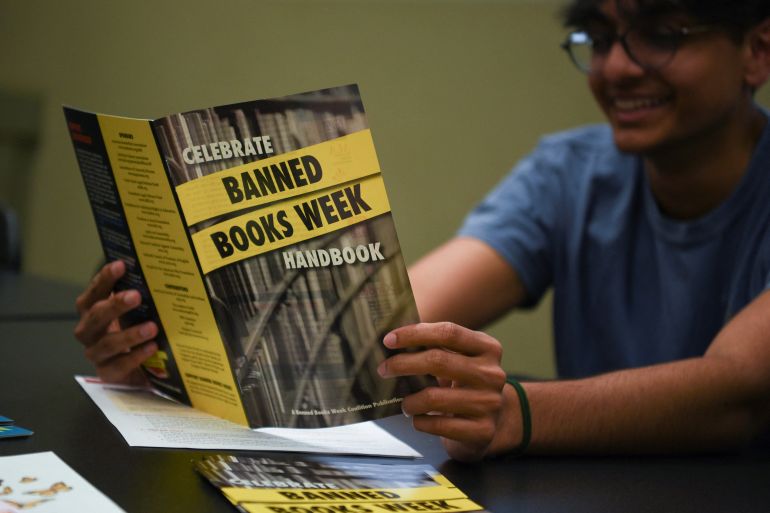To the Brandywine Public Schools Board of Education:
I am a 1974 graduate of Brandywine Public High School. My sister graduated in 1969, and ultimately became a Hospice nurse. My father was Director of Guidance at BHS in the early to mid-1960s, when he died at age 36 of a rare illness, likely attained during his service in the Navy during World War II. My mother went to college after he died. Once she graduated, she was hired to teach in the English Department at Brandywine, where she remained until her retirement. Given this family history, I feel some responsibility for speaking up at this important time in Brandywine’s educational development.
During the years of my dad’s illness, and after his death, we received vital support from the Brandywine family. And yes, it was a family. I’m sure people had a diversity of political and religious points of view, but those differences were not at the forefront of the conversations and friendships. I cannot imagine how our family would have remained as intact as it was and is without that cohesive network that kept us grounded. From what I understand, Brandywine now has a fine faculty and administration that continues in the tradition I have described. The community is lucky to have such impressive human resources.
I feel sadness and anger, then, that members of the school board are now jumping on the bandwagon of recent trends in bringing conservative religious and political dogma into educational decision-making, planning to sift through libraries and teacher’s curricular plans to rid them of what these board members consider dangerous ideas. These plans threaten to create unnecessary conflict between the board and the staff and administration. They represent a lack of understanding of the purpose and power of education, and why a free exchange of ideas is imperative to a healthy school system, and they communicate a lack of trust in educated and experienced teachers, librarians, and administrators.
After I graduated from Brandywine, I attended Kalamazoo College, and received my Masters from Western Michigan University. I ended up teaching at both WMU and “K,” and in fact was Writer in Residence at K for 30 years. I have written poems since my first typing class when I was a freshman at BHS. Learning to type came easy, and freed up my imagination, in that I could move ideas from my brain to the page very quickly. I never had my mom in class, but I had her at home. At school, I had wonderful teachers who supported my creativity, even though I wasn’t a “typical” student. That bedrock led to my own teaching career, and to my publication of five books of poems. Last year, my fifth book received several national and international awards, including the Pulitzer Prize. I am one of three poets from Michigan, the only female, and the only poet who continued living in Michigan, to have received the Pulitzer.
And here’s the thing: I don’t believe any of my accomplishments would have happened without my time at Brandywine. Books were freely available in the library. Challenging books. Even controversial books. My mom taught some of them in her classrooms, and kept those students who might have otherwise checked out engaged in discussions of literature to which they could relate, or even about which they could argue. My theater teacher encouraged me to do some acting. He directed plays that the community attended in droves. They were plays that brought crucial historical and emotional issues into the light. For instance, we did Arthur Miller’s The Crucible, on the Salem witch trials, in which people who may have lived differently, or thought differently, or expressed themselves differently from the norm, were put on trial and, in many cases, executed. I learned from my involvement in Jim’s plays that I was capable of working hard and of expressing myself in ways that could matter to others. I learned empathy, and the price one can pay for having a controversial point of view. I gained confidence. I experienced excellence.
I urge the school board to think long and hard before turning Brandywine into a school system without freedom of thought and freedom of expression. You risk alienating hard-working professionals who are, in fact, experts in their fields. You risk shutting down the imaginations and intellectual adventurousness of the students. A surefire way to turn off students to their own educations is to control them into submission. If you fear what is now being tagged “Critical Race Theory,” make very sure you understand what it means. I suggest you not get your information from conspiracy-laden websites, but from unbiased experts. I have never seen CRT taught outside of college courses. Middle or high school history text books that offer a unit on slavery in the United States, and the issues that led to the Civil War, are not engaging in CRT. They are attending to historical reality. I remember stumbling through the construction site that was to become Brandywine Public High School with my dad, holding his hand. He had such hopes, such excitement for what that building could offer its future students. I wish he was still here to write his own letter to you. I’m sure it would be wiser and kinder than mine. What I know is that the school board has the power to extend or destroy his legacy. I wish you wisdom in your decision-making.
With hope, and warm regards,
Diane Seuss Professor of English, Emerita Kalamazoo College















